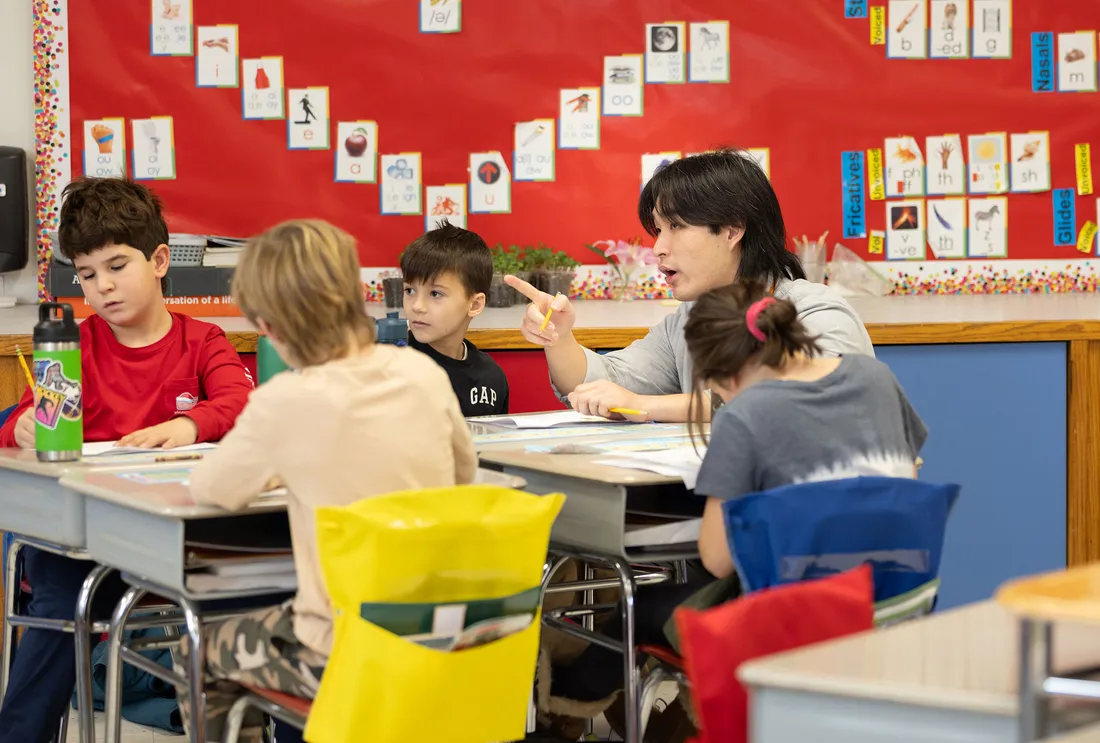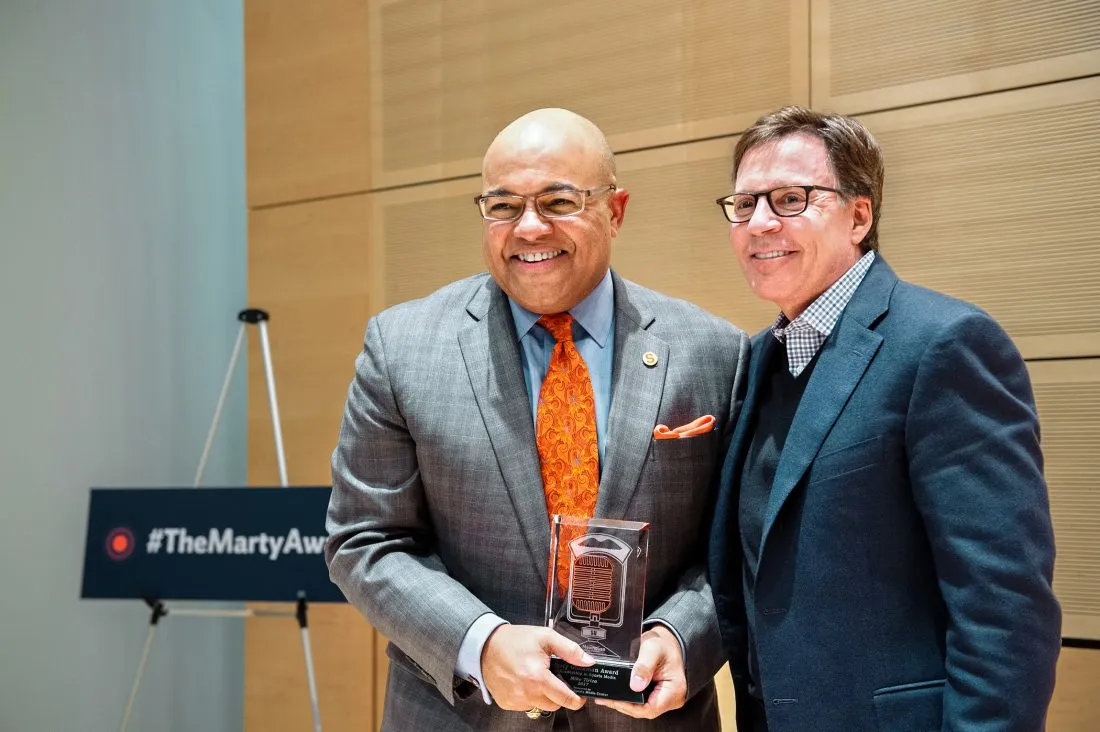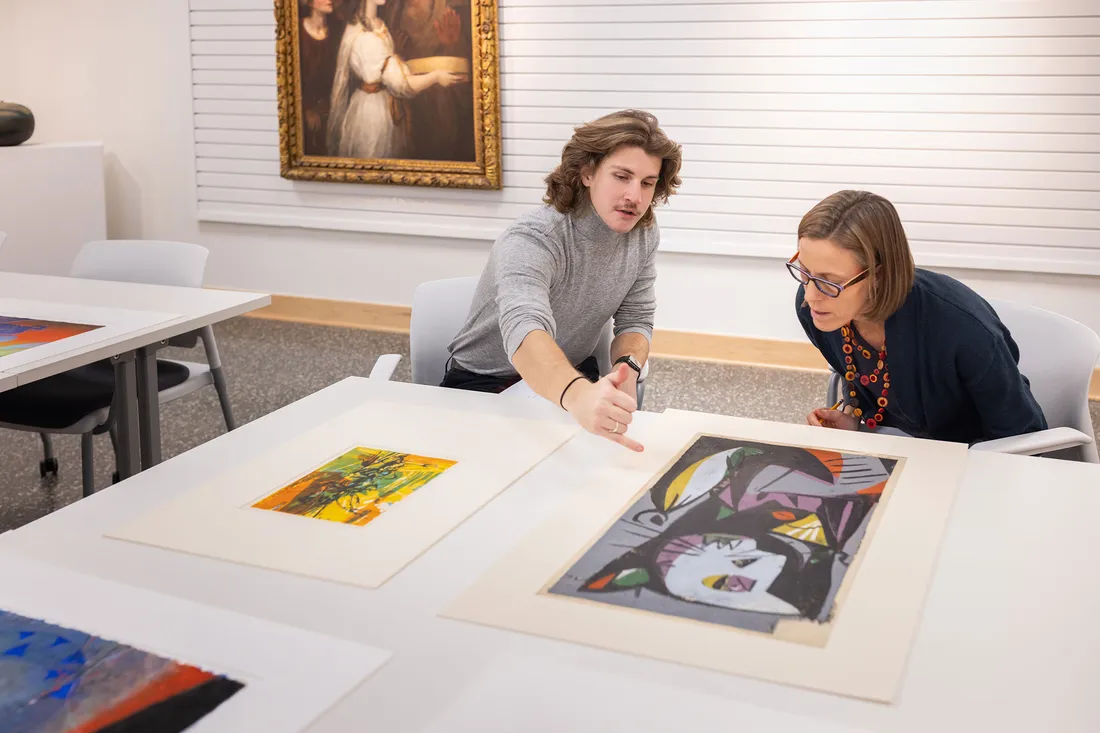
Patrick Holton G’26 confers with Sascha Scott, associate professor of art history, about pieces for To Understand and to be Understood, a student-curated show in the Syracuse University Art Museum.
Tetsuo Ochikubo G’68 was a Japanese American painter, sculptor and printmaker who taught at Syracuse University in the 1960s and ’70s. Born in Hawaii, he combined traditional brush painting with an abstract sensibility that blurred artistic and cultural borders. “My ultimate purpose is to be an artist of substance and consequence—to understand and to be understood,” he famously said.
Ochikubo is one of eight Asian American and Asian diasporic artists on display in a student-curated show, aptly titled To Understand and to be Understood. The exhibition runs from Jan. 25 to March 8 in the Syracuse University Art Museum, located in the Shaffer Art Building.
Directed by Associate Professor Sascha Scott, To Understand is part of a 14-week proseminar that teaches graduate students how to research, write about and present artworks for public display.
“The student curatorial team benefits from the knowledge and guidance of scholars like Interim Chief Curator Melissa Yuen and history professor Junko Takeda, the latter of whom is a specialist in Asian American history,” says Scott, an accomplished art historian in the M.A. in Art History (Main Campus) program in the College of Arts and Sciences.
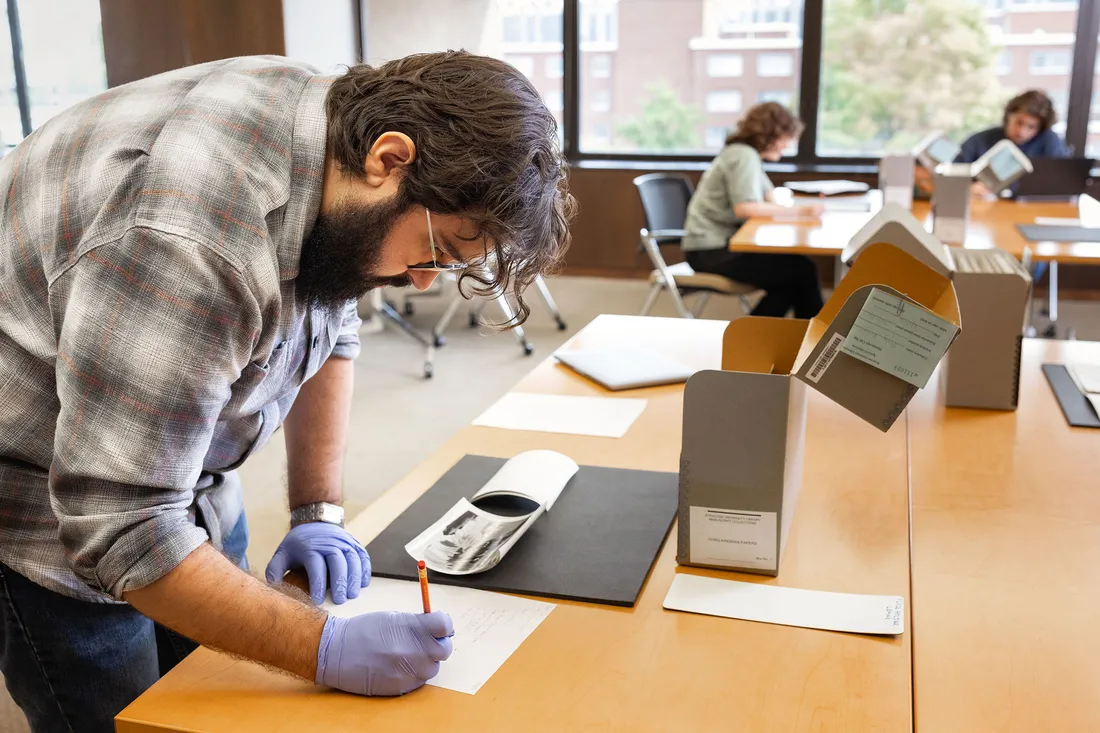
Dante Feliciano G’25 in the Special Collections Research Center. An aspiring curator, he’s learning how to research, write about and present artworks for public display.
Produced in the United States between the 1960s and 1980s, most of the featured artworks have rarely been exhibited at the museum. They’re also part of its 45,000-piece collection, among the largest in academia.
Dante Feliciano G’25 is one of the exhibition’s five student curators. “I’m learning how to think conceptually while looking at contemporary art through a new lens,” reflects the classically trained painter, who has been studying two pieces by Risaburo Kimura. “As an aspiring curator, I’m learning how to know my audience.”
Reshaping the Narrative
Scott selected the works in partnership with Yuen, who is known for her diverse and inclusive curatorial practices. Their goal is to highlight different approaches to painting, ceramics and printmaking by not only Asian American artists, but also Asian diasporic artists who relocated to the United States.
“To Understand reflects these artists’ techniques, ideas and aesthetic sensibilities, including their engagement with avant-garde movements like Abstract Expressionism,” Scott says. “Like Ochikubo, these artists sought a type of universal language and expression through their art.”
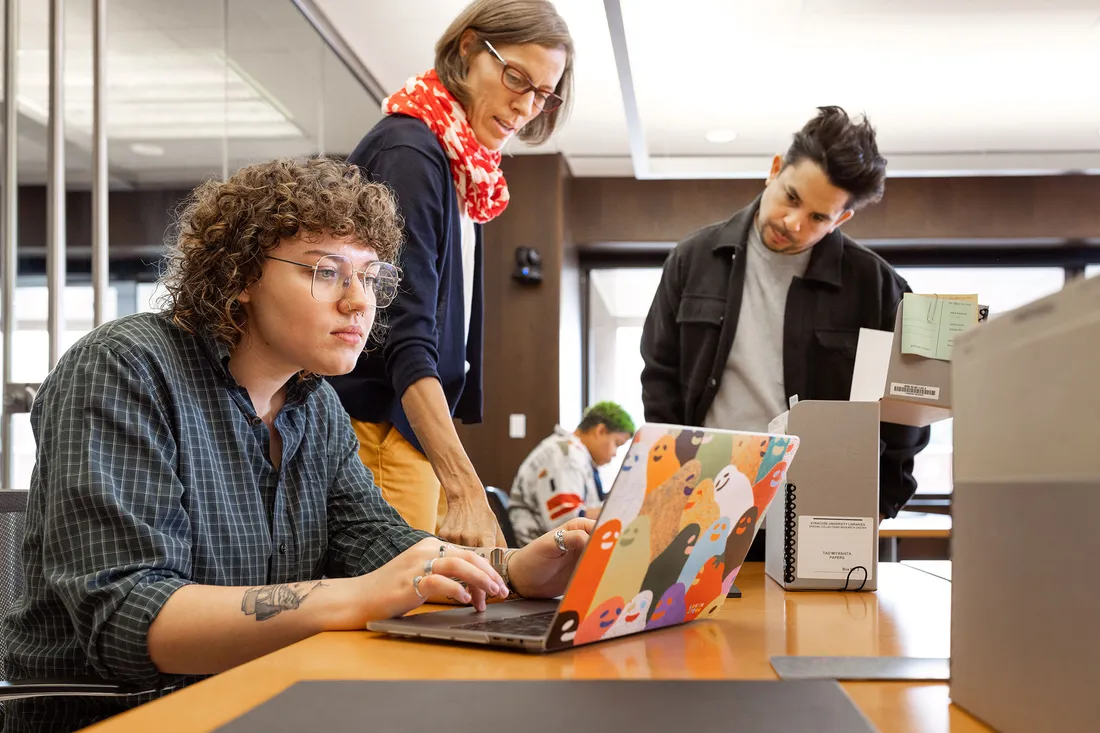
To Understand features rarely seen artworks by Asian American and Asian diasporic artists who have lived in the United States. “We’re reshaping the public narrative about contemporary art,” says Coral Silver G’25 (left) of the exhibition.
Responding to a surge in anti-Asian hate crimes and incidents in the United States, Scott hopes that To Understand will stir interest in Asian and Asian American cultures, histories and issues. Most of the artists on display, she adds, are underrepresented in museums and scholarship.
“Each of them experienced discrimination at some point in their life,” Scott continues, “be it through mass internment, an inability to gain citizenship, harsh immigration laws or reductive reviews of their work.”
Aspiring professor Coral Silver G’25 applauds such advocacy: “By highlighting overlooked or unnoticed artists, we’re reshaping the public narrative about contemporary art.”
I’m learning how to think conceptually while looking at contemporary art through a new lens. As an aspiring curator, I’m learning how to know my audience.
Dante Feliciano G’25
Breathing New Life Into Ancient Techniques
To Understand represents several modernist movements, including Abstract Expressionism. Emerging in New York City in the 1940s and ’50s, Abstract Expressionism captured the prevailing mood of postwar anxiety and trauma. “Action painters” like Jackson Pollock and “color field painters” such as Mark Rothko depicted profound emotions and universal themes in vibrant, abstract ways. To paraphrase critic Clement Greenberg ’30, Abstract Expressionism was about experience, not principles.
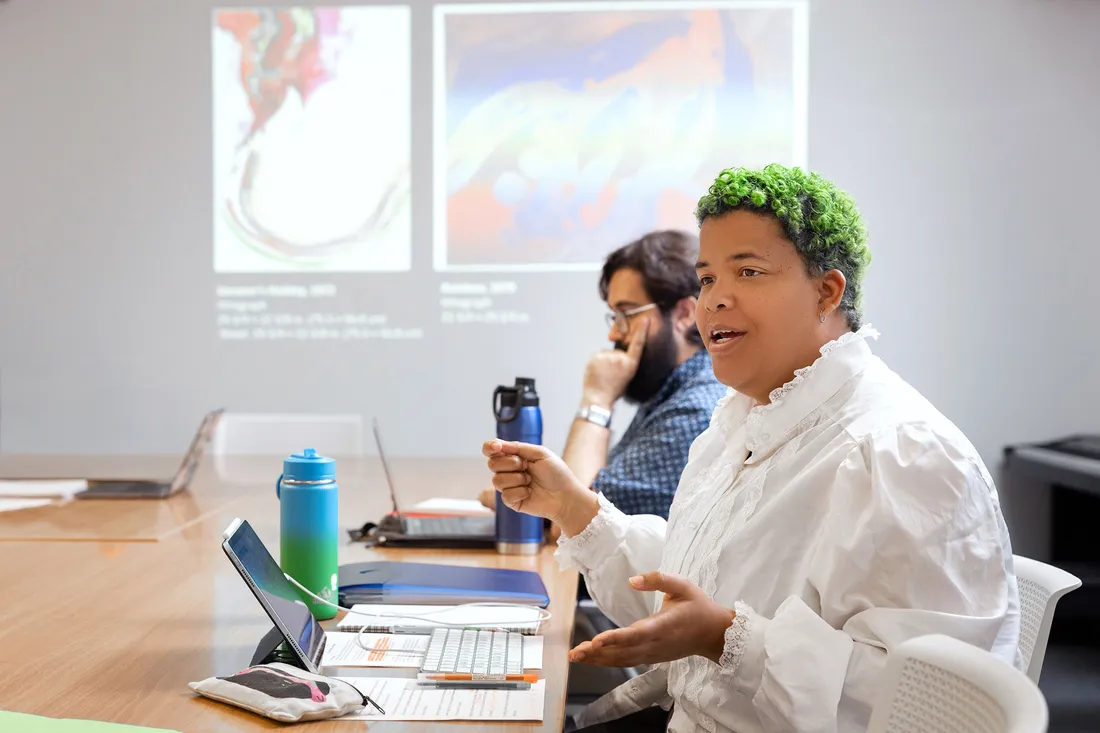
Michael Parks G’25 has focused on two pieces by Toshiko Takaezu, a technically masterful, innovative artist known for her ceramic sculptures. He plans to pursue a career in higher education.
It was against this backdrop that many Asian and Asian American artists labored in obscurity, despite their desire to produce art that connected diverse viewers through the visual language of texture, color, shape, line and form. Sometimes their work was overlooked; sometimes it garnered national interest, Scott admits. “Critics often stereotyped the works’ formal qualities based on the artists’ ethic identities, failing to see their attempts to communicate universal ideas.”
Michael Parks G’25 has studied two pieces by Toshiko Takaezu, who ignited a global ceramic arts revival in the 1950s and ’60s. Although her glaze application has been compared to the spontaneous brushwork of Pollock, Takaezu is far from a household name. “Still, her unique work has an immense impact on those who see it,” says Parks, an aspiring teacher-scholar.
The same goes for printmaker Seong Moy, who earned a spot in New York City’s fabled Atelier 17 studio and won a prestigious Guggenheim Award. “Unless you’re in the know, you likely haven’t seen Moy’s work nor heard of him,” says Patrick Holton G’26, who’s presenting two of Moy’s signature woodcuts. “These artists flew below the radar, breathing new life into ancient techniques.”
The Art of Curation
The main campus program is one of two master’s programs in art history in the Department of Art and Music Histories. The other is the Florence Program in Italian Renaissance Art. Students can also earn a master’s degree in museum studies in the College of Visual and Performing Arts.
Steeped in experiential learning, the main campus program facilitates student collaborations with the University’s art museum, the Libraries’ Special Collections Research Center and the Everson Museum of Art in downtown Syracuse.
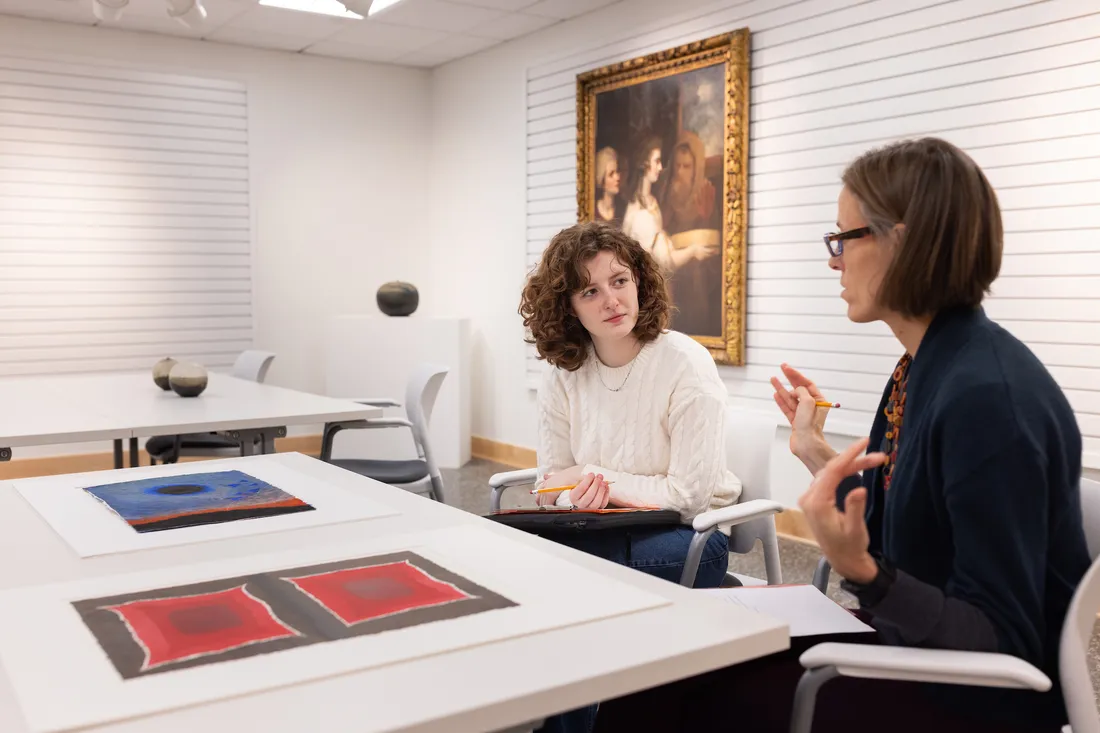
Mary Visco G’25 (left) has curated pieces by Tetsuo Ochikubo G’68, a former Syracuse professor who, as an artist, sought to “understand and be understood.” Handling his paintings has been a “dream come true,” she says.
“We provide a comprehensive overview of art history while enabling students to pursue specialized interests,” says Scott of the main campus program, whose alumni include Steffi Chappell G’15, the Everson’s curator and exhibition manager. (Other alumni also work in the art industry, in addition to higher education, journalism and arts leadership.) “There’s considerable emphasis on research, written and oral communication skills and on informed criticism.”
Given the University’s storied commitment to social justice scholarship, a show like To Understand is bound to be well attended, predicts Mary Visco G’25, who has created wall texts and a 10-page essay about her respective objects.
By highlighting overlooked or unnoticed artists, we’re reshaping the public narrative about contemporary art.
Coral Silver G’25
A fledgling curator with an interest in late modernism, she chose Syracuse for its hands-on, real-world opportunities. Immersing herself in the work of Ochikubo has been a “dream come true.”
“The University owns a rich collection of 20th-century Asian and Asian American artworks, some of which are quite rare,” Visco adds. “I’m learning how to integrate this aesthetic into my research and into my life and career.”

